

"Kusina" = kitchen; "Manang" (aka Ate in Tagalog)= Ilokano term for older sister.
A Filipina's adaptation in an American Kitchen


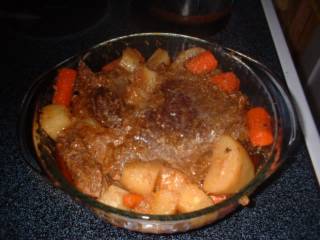
BP = CO x PR
This means that blood pressure is influenced by these two factors.
Cardiac output also has an equation:
CO = HR x SV
where:
If you combine the two equations,
BP = HR x SV x PR
So there are 3 factors that operate in increasing the BP:
(For more readings on blood pressure physiology, here is a good educational website by an anatomy and physiology academician)
In human physiology, the two major cations (positively charged ions) are Na (sodium) and K (potassium) ions. They directly affect the normal functioning of all cells. Na is the main cation in the extracellular fluid (nasa labas ng cells, meaning nasa dugo, in-between ng cells, basta wala sa loob ng cells). K is (nahulaan nyo na siguro) the main cation inside the cells. And when we talk of these ions, we are concerned about electrolyte balance (narinig nyo na siguro ito pag me diarrhea kayo at kelangan nyo ng oresol).
From Martini's Anatomy and Physiology:
The total amount of sodium in the ECF represents a balance between two factors:
- Sodium ion uptake across the digestive epithelium. Sodium ions enter the ECF by crossing the digestive epithelium through diffusion and carrier-mediated transport. The rate of absorption varies directly with the amount of sodium in the diet.
- Sodium ion excretion at the kidneys and other sites. Sodium losses occur primarily by excretion in urine and through perspiration. The kidneys are the most important sites of Na+ regulation. (Kaya bawal din ang maalat sa me sakit sa bato.)
A person in sodium balance typically gains and loses 48–144 mEq (1.1–3.3 g) of Na+ each day. When sodium gains exceed sodium losses, the total Na+ content of the ECF goes up; when losses exceed gains, the Na+ content declines. However, a change in the Na+ content of the ECF does not produce a change in the Na+ concentration. When sodium intake or output changes, a corresponding gain or loss of water tends to keep the Na+ concentration constant. For example, if you eat a very salty meal, the osmotic concentration of your ECF will not increase. When sodium ions are pumped across your digestive epithelium, the solute concentration in that portion of the ECF increases, whereas that of the intestinal contents decreases. Osmosis then occurs. Additional water enters the ECF from the digestive tract, elevating blood volume and blood pressure. Thus, persons with high blood pressure are advised to restrict the amount of salt in their diets.
Ngayon, hindi lang "maalat" ang equivalent ng "restrict the salt intake". In particular, pay attention to the sodium content of your food. Gaya ng MSG (monosodium glutamate), peanut butter, etc. To see a list of sodium-rich foods, click here.
Gets nyo na? Kaya kayong me hayblad, WAG MATIGAS ANG ULO (If you still need more convincing to lower your BP, ask doc emer about the complications of HPN.)

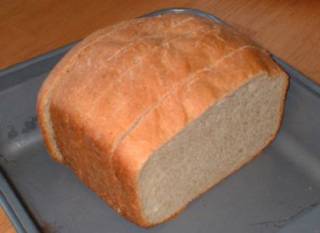
I have now been in this country for over six years, and consider myself in most respects well-assimilated. However, there is one key step on the road to full assimilation which I have yet to take, and that's to eat BALUT.
The day any of you sees me eating balut, please call immigration and ask them to issue me a Filipino passport. Because at that point there will be no turning back.
BALUT, for those still blissfully ignorant non-Pinoys out there, is a fertilized duck egg. It is commonly sold with salt in a piece of newspaper, much like English fish and chips, by street vendors usually after dark,presumably so you can't see how gross it is. It's meant to be an aphrodisiac, although I can't imagine anything more likely to dispel sexual desire than crunching on a partially-formed baby duck swimming in noxious fluid. The embryo in the egg comes in varying stages of development, but basically it is not considered macho to one without fully discernable feathers, beak, and claws. Some say these crunchy bits are the best.Others prefer just to drink the so-called 'soup', the vile, pungent liquid that surrounds the aforementioned feathery...excuse me, I have to go and throw up now. I'll be back in a minute.
Food dominates the life of the Filipino. People here just love to eat. They eat at least eight times a day. These eight official meals are called,in order: breakfast, snacks, lunch, merienda, pica-pica, pulutan, dinner,
and no-one-saw-me-take-that-cookie-from-the-fridge-so-it-doesn't-count. The short gaps in between these mealtimes are spent eating Sky Flakes from the open packet that sits on every desktop. You're never far from
food in the Philippines. If you doubt this, next time you're driving home from work, try this game. See how long you can drive without seeing food and I don't mean a distant restaurant, or a picture of food. I mean a man on
the sidewalk frying fish balls, or a man walking through the traffic selling nuts or candy. I bet it's less than one minute.
Here are some other things I've noticed about food in the Philippines.Firstly, a meal is not a meal without rice-even breakfast. In the UK,I could go a whole year without eating rice. Second, it's impossible to drink without eating. A bottle of San Miguel just isn't the same without gambas or beef tapa. Third, no one ventures more than two paces from their house without baon and a container of something cold to drink. You might as well ask a pinoy to leave home without his pants on. And lastly, where I come from, you eat with a knife and fork. Here, you eat with a spoon and fork.You try eating rice swimming in fish sauce with a knife.One really nice thing about Filipino food culture is that people always ask you to SHARE their food. In my office, if you catch anyone
attacking their baon, they will always go. "Sir! KAIN TAYO!" ("Let's eat!"). This confused me, until I realized that they didn't actually expect me to sit down and start munching on their boneless bangus. In fact, the polite
response is something like, "No thanks, I just ate." But the principle is sound-if you have food on your plate, you are expected to share it, however hungry you are, with those who may be even hungrier. I think that's great.
In fact,this is frequently even taken one step further. Many Filipinos use "Have you eaten yet?" ("KUMAIN KA NA?") as a general greeting, irrespective of time of day or location. Some foreigners think Filipino food is fairly dull compared to other Asian cuisines. Actually lots of it is very good:spicy dishes like Bicol Express (strange, a dish named after a train);anything cooked with coconut milk; anything KINILAW; and anything ADOBO.
And it's hard to beat the sheer wanton, cholesterholic frenzy of a good old-fashioned LECHON de leche feast. Dig a pit, light a fire, add 50 pounds of animal fat on a stick, and cook until crisp. Mmm, mmm... you can actually feel your arteries constricting with each successive mouthful.
I also share one key Pinoy trait ---a sweet tooth. I am thus the only foreigner I know who does not complain about sweet bread, sweet burgers,sweet spaghetti, sweet banana ketchup, and so on. I am a man who likes to put jam on his pizza. Try it! It's the weird food you want to avoid.
Duck fetus in the half-shell, items to avoid in the Philippines include pig's blood soup (DINUGUAN); bull's testicle soup,the strangely-named "SOUP NUMBER FIVE" (I dread to think what numbers one through four are) and the ubiquitous, stinky shrimp paste, BAGOONG, and it's equally stinky sister, PATIS.
Filipinos are so addicted to these latter items that they will even risk arrest or deportation trying to smuggle them into countries like Australia and the USA, which wisely ban the importation of items you can smell from more than 100 paces.
Then there's the small matter of the blue ice cream. I have never been able to get my brain around eating blue food; the ubiquitous UBE leaves me cold.
And lastly on the subject of weird food, beware: that KALDERETANG KAMBING(goat) could well be KALDERETANG ASO (dog)... The Filipino, of course,has a well-developed sense of food.
Here's a typical Pinoy food joke: "I'm on a seafood diet. "What's a seafood diet?" "When I see food, I eat it!"
Filipinos also eat strange bits of animals---the feet, the head, the guts,etc., usually barbecued on a stick. These have been given witty names, like "ADIDAS" (chicken's feet); "KURBATA" (either just chicken's neck, or "neck and thigh" as in "neck-tie"); "WALKMAN" (pigs ears); "PAL" (chicken wings);"HELMET" (chicken head); "IUD" (chicken intestines), and "BETAMAX"(video-cassette-like blocks of animal blood). Yum, yum. Bon
appetit.
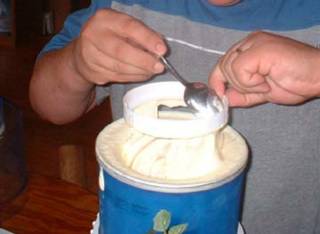
SPINACH- have you tried it with mungo or soup bone? finely chopped them then add to ramen noodles with diced carrots pero cook it as dry as pancit as a side dish. we add that also to rice-a-roni. (my kids love spinach. they don't love vegetables but they have no choice but eat them or else no dessert).
PLANTING KAMOTE TOPS and KANGKONG- put stem in water to root then plant them in your garden or plant them in a pot, take them out during summer and bring in the house before winter. (when bringing plants from outside, make sure the temp. outside is as close as the temp. inside the house so the plant will not experience shock).
AMPALAYA -i tried planting this one summer and i have no luck. but i think you can put them straight in your garden. (my husband suggest that you soak them in water then when it begin to sprout then plant them. then you will know if seeds are good or not).
right now i have tomato in a pot (inside the house)and i will dig my eggplant and plant it in a pot so i can bring it inside.
i used to have malunggay in the house planted in the pot then every summer i plant that outside but died just this winter coz of the burrow worm (?).
CANNING- i canned salsa and apple sauce. canning tips i learn is after you are done processing or pressure cooking your can jars (with goodies in it) tip it upside down and leave it 24 hours to seal it really good. ( OUR GOVERNMENT CENTER HAVE EXTENSION OFFICE WHO GIVE OUT INFORMATION REGARDING PROPER CANNING, FREEZING AND COOKING OF FOODS. YOU MIGHT HAVE ONE ALSO. SOME UNIVERSITY DO HAVE THIS ALSO, PARANG U.P.).
i learned also that you can cut your vegetables, put them in your canning jars, add water and a teaspoon of salt on top (sugar if sweetcorn) then process it. i will try to do this on my corn and greenbeans this year.
FREEZING- i tried freezing sweetcorn and greenbeans but the taste deteriorates. i only freeze tomatoes, i dice, drip, then lay them in cookie sheet, let it freeze then store in ice cream pail or put them directly in ziploc bags, put enough to make it lie flat in the freezer. (i do freeze a lot of cookies, pies,cakes, muffins, breads. either whole or in slices).
DEHYDRATOR, VACUUM PACKING- you can buy a dehydrator or use your oven (200 degrees) for tomatoes (slice thinly then drip dry), leaves of onions, dill, chives and the likes. it has longer storage life if you store them in the freezer after dehydrating.
i don't have a vacuum packing gadget but you probably see them in ads, they say it prolong storage life.
MAKING KIDS EAT FRUITS AND VEGETABLES- i make zucchini bread, pumpkin bread (i use squash sometimes)or bars, carrot cake, apple muffin or cake, blueberry coffee cake, muffin or pancake. (i don't tell them what's in it just let them taste them first).
in our garden, we have peanuts (kids love boiled peanuts) and okra. tried munggo but all dead due to weather.
ACC (Acetyl-Coa carboxylase) is the rate limiting (committed) step in fatty acid synthesis....Insulin stimulates ACC and FAS (fatty acid synthase) synthesis, whereas, starvation leads to decreased synthesis of these enzymes. Adipose tissue lipoprotein lipase levels also are increased by insulin and decreased by starvation. However, in contrast to the effects of insulin and starvation on adipose tissue, their effects on heart lipoprotein lipase are just the inverse. This allows the heart to absorb any available fatty acids in the blood in order to oxidize them for energy production. Starvation also leads to increases in the levels of fatty acid oxidation enzymes in the heart as well as a decrease in FAS and related enzymes of synthesis....Adipose tissue contains hormone-sensitive lipase, that is activated by PKA-dependent phosphorylation leading to increased fatty acid release to the blood. The activity of hormone-sensitive lipase is also affected positively through the action of AMPK. Both of these effects lead to increased fatty acid oxidation in other tissues such as muscle and liver. In the liver the net result (due to increased acetyl-CoA levels) is the production of ketone bodies. This would occur under conditions where insufficient carbohydrate stores and gluconeogenic precursors were available in liver for increased glucose production. The increased fatty acid availability in response to glucagon or epinephrine is assured of being completely oxidized since both PKA and AMPK also phosphorylate (and as a result inhibits) ACC, thus inhibiting fatty acid synthesis.
Insulin, on the other hand, has the opposite effect to glucagon and epi leading to increased glycogen and triacylglyceride synthesis. One of the many effects of insulin is to lower cAMP levels which leads to increased dephosphorylation through the enhanced activity of protein phosphatases such as PP-1. With respect to fatty acid metabolism this yields dephosphorylated and inactive hormone sensitive lipase. Insulin also stimulates certain phosphorylation events. This occurs through activation of several cAMP-independent kinases. Insulin stimulated phosphorylation of ACC activates this enzyme.... When carbohydrate utilization is low or deficient, the level of oxaloacetate will also be low, resulting in a reduced flux through the TCA cycle. This in turn leads to increased release of ketone bodies from the liver for use as fuel by other tissues. In early stages of starvation, when the last remnants of fat are oxidized, heart and skeletal muscle will consume primarily ketone bodies to preserve glucose for use by the brain....extrahepatic tissues (tissues other than liver) have access to ketone bodies as a fuel source during prolonged starvation....
The production of ketone bodies occurs at a relatively low rate during normal feeding and under conditions of normal physiological status. Normal physiological responses to carbohydrate shortages cause the liver to increase the production of ketone bodies from the acetyl-CoA generated from fatty acid oxidation. This allows the heart and skeletal muscles primarily to use ketone bodies for energy, thereby preserving the limited glucose for use by the brain.
The most significant disruption in the level of ketosis, leading to profound clinical manifestations, occurs in untreated insulin-dependent diabetes mellitus. This physiological state, diabetic ketoacidosis (DKA), results from a reduced supply of glucose (due to a significant decline in circulating insulin) and a concomitant increase in fatty acid oxidation (due to a concomitant increase in circulating glucagon). The increased production of acetyl-CoA leads to ketone body production that exceeds the ability of peripheral tissues to oxidize them. Ketone bodies are relatively strong acids (pKa around 3.5), and their increase lowers the pH of the blood. This acidification of the blood is dangerous chiefly because it impairs the ability of hemoglobin to bind oxygen.
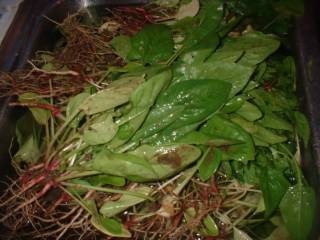


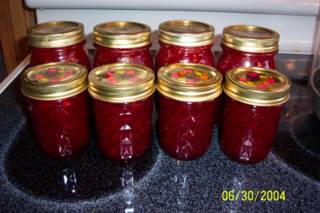 It has dawned on me how people who live in areas where the summers are short and winters long have mastered the methods of food processing and preserving...from berries (which would have been of little value to Pinoys if they were native berries and grew wild, eaten all through the year for free...) to meats. Come to think of it...how many rotten tomatoes and veggies are being thrown away daily in the Philippines?...I have learned to take advantage of the growing season here...and I have learned to make jams and jellies among other things to preserve the produce that I got from my garden.
It has dawned on me how people who live in areas where the summers are short and winters long have mastered the methods of food processing and preserving...from berries (which would have been of little value to Pinoys if they were native berries and grew wild, eaten all through the year for free...) to meats. Come to think of it...how many rotten tomatoes and veggies are being thrown away daily in the Philippines?...I have learned to take advantage of the growing season here...and I have learned to make jams and jellies among other things to preserve the produce that I got from my garden.



Strawberries freeze well. You can do so with or without sugar. To freeze strawberries using sugar, mix equal amounts of sugar and water in a saucepan. Stir over medium heat until sugar is dissolved and mixture is clear. Cool the mixture completely. Measure 1 cup (149g) of stemmed and sliced strawberries into a 2-cup-size (473.16ml) freezer bag. Pour 1/2 to 2/3 of a cup (118.3,157.7ml) of the sugar/water mixture into the bag,just enough to completely cover the strawberries. Seal and freeze the bag, keeping berries in a single layer.We consume about 1 small jar in 2-3 days, on Ritz crackers, or PB&J sandwiches, on pancakes, on muffins, and anything that suits us! Hope you too will enjoy your strawberries!
To freeze strawberries without the use of sugar, set whole, firm berries on a cookie sheet, in a single layer and not touching each other, and place in the freezer. After berries are frozen, put them in a sealable plastic bag. This way they are 'individually frozen' and do not stick together.
Because the moisture content of strawberries varies throughout the season, it is recommended that home-frozen strawberries be used in beverages and sauces, not in recipes where liquid variations could make a difference. (Commercially frozen strawberries are consistent in texture and density.)
Thawing strawberries in the refrigerator will allow them to retain their shape better. When thawing at room temperature, keep the berries in a clean, sanitary environment. Cover and refrigerate unused thawed berries within two hours. Never try to speed up the thawing process by running water over the outside of the container, as that allows bacteria to grow. After thawing, keep berries refrigerated and use within three days. Never re-freeze strawberries.
While still attractive, thawed strawberries may be a little darker and lack the sheen that a fresh berry would have.




Strawberries freeze well. You can do so with or without sugar. To freeze strawberries using sugar, mix equal amounts of sugar and water in a saucepan. Stir over medium heat until sugar is dissolved and mixture is clear. Cool the mixture completely. Measure 1 cup (149g) of stemmed and sliced strawberries into a 2-cup-size (473.16ml) freezer bag. Pour 1/2 to 2/3 of a cup (118.3,157.7ml) of the sugar/water mixture into the bag,just enough to completely cover the strawberries. Seal and freeze the bag, keeping berries in a single layer.
To freeze strawberries without the use of sugar, set whole, firm berries on a cookie sheet, in a single layer and not touching each other, and place in the freezer. After berries are frozen, put them in a sealable plastic bag. This way they are 'individually frozen' and do not stick together.
Because the moisture content of strawberries varies throughout the season, it is recommended that home-frozen strawberries be used in beverages and sauces, not in recipes where liquid variations could make a difference. (Commercially frozen strawberries are consistent in texture and density.)
Thawing strawberries in the refrigerator will allow them to retain their shape better. When thawing at room temperature, keep the berries in a clean, sanitary environment. Cover and refrigerate unused thawed berries within two hours. Never try to speed up the thawing process by running water over the outside of the container, as that allows bacteria to grow. After thawing, keep berries refrigerated and use within three days. Never re-freeze strawberries.
While still attractive, thawed strawberries may be a little darker and lack the sheen that a fresh berry would have.
